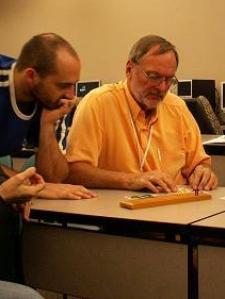a) which technique for solving the quadratic equation is going to be best for this equation and why?
s(t)= -16t^2 +64t +160 = 0 is the equation to be solved, to find time it takes for projectile to strike ground.
FACTOR: -16(t2 - 4t - 10) = 0; we see that factoring will not give a solution, so use the quadratic formula on the quadratic enclosed in parentheses. Do not accept a negative answer, because t≥0 is an obvious domain restriction.
d) the ball will never reach a height of 300 ft. How can this be determined algebraically?
Find the vertex of the quadratic, which is the function's maximum. t = -b/(2a) = -(-4)/2 = 2, and
s(2)= -16(22 -4•2-10) = -16(4 - 18) = 16(14) = 224, which is maximum attainable height, in ft.









Ashley N.
01/30/17